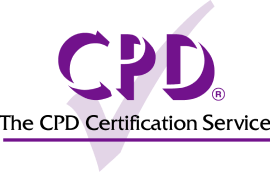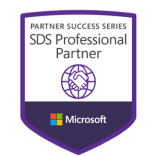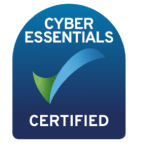

C-OCM-2503 Reliable Exam Tips | Official C-OCM-2503 Study Guide
It is well known that even the best people fail sometimes, not to mention the ordinary people. In face of the SAP C-OCM-2503 exam, everyone stands on the same starting line, and those who are not excellent enough must do more. If you happen to be one of them, our SAP Certified Associate - Organizational Change Management C-OCM-2503 Learning Materials will greatly reduce your burden and improve your possibility of passing the exam. Our advantages of time-saving and efficient can make you no longer be afraid of the C-OCM-2503 exam.
SAP C-OCM-2503 Exam Syllabus Topics:
Topic
Details
Topic 1
Topic 2
Topic 3
Topic 4
>> C-OCM-2503 Reliable Exam Tips <<
Official C-OCM-2503 Study Guide | Real C-OCM-2503 Testing Environment
For the purposes of covering all the current events into our C-OCM-2503 study guide, our company will continuously update our training materials. And after payment, you will automatically become the VIP of our company, therefore you will get the privilege to enjoy free renewal of our C-OCM-2503 practice test during the whole year. No matter when we have compiled a new version of our C-OCM-2503 Training Materials our operation system will automatically send the latest version of the C-OCM-2503 preparation materials for the exam to your email, all you need to do is just check your email then download it.
SAP Certified Associate - Organizational Change Management Sample Questions (Q69-Q74):
NEW QUESTION # 69
What are characteristics of suitable interview partners for a change assessment? Note: There are 2 correct answers to this question.
Answer: A,D
Explanation:
Change assessment interviews in SAP OCM (Prepare phase) require informed respondents. Option C is correct because partners with an overview of the project-its goals (e.g., cost reduction) and impacts (e.g., process shifts)-can provide strategic insights, often leaders or key users briefed early. Option D is correct as company knowledge (e.g., past change successes/failures) enables contextual answers, grounding feedback in organizational reality-e.g., "We struggled with training last time." Option A is incorrect-employee-level staff may represent users but often lack the broad perspective needed; key users suffice. Option B is incorrect; OCM experience is helpful but not required-interviewees provide data, not advice. SAP OCM seeks knowledgeable, experienced voices.
"Suitable interview partners have project overview and company experience to offer informed insights for the change assessment" (SAP OCM Framework, Interview Partner Selection).
NEW QUESTION # 70
Which dimensions are suitable for analyzing individual stakeholders of a cloud implementation in a 2x2 matrix? Note: There are 2 correct answers to this question.
Answer: A,C
Explanation:
A 2x2 matrix in SAP OCM stakeholder analysis plots individuals for strategic engagement. Option B is correct-attitude (negative vs. positive) gauges support level-e.g., a positive VP vs. a negative clerk- guiding communication focus. Option C is correct as influence (low vs. high) measures impact potential-e.
g., a high-influence director can sway outcomes more than a low-influence user-prioritizing effort. Together, they create a matrix (e.g., high-influence/positive = "champions") for tailored strategies.
Option A is incorrect-"degree of resistance" overlaps with attitude; it's a symptom, not a distinct axis.
Option D is incorrect; change impact extent is group-level (e.g., unit-wide), not individual-specific in a 2x2.
SAP OCM uses attitude/influence for precision.
"Analyze stakeholders in a 2x2 matrix using attitude (positive/negative) and influence (low/high) toprioritize engagement effectively" (SAP Activate, Stakeholder Analysis Tools).
NEW QUESTION # 71
What are typical agenda topics for a change network kick-off meeting? Note: There are 2 correct answers to this question.
Answer: B,D
Explanation:
A change network kick-off meeting in SAP OCM launches the change agent network. Option C is correct because the change manager outlines the approach and agent roles, setting expectations. Option D is correct as the sponsor's input underscores the project's strategic value, motivating agents. Option A is incorrect- subproject managers focus on technical areas, not the change network. Option B is also incorrect; past experiences may inform planning but aren't a typical agenda item for agents. The focus is on role clarity and project significance.
"The change network kick-off includes the change manager defining roles and the sponsor reinforcing project importance to align and motivate agents" (SAP Activate, Change Network Setup).
NEW QUESTION # 72
What is the added value of a change plan? Note: There are 2 correct answers to this question.
Answer: B,C
Explanation:
A change plan in SAP's Organizational Change Management framework is a structured tool that outlines the scope, activities, and timeline for managing the people side of a project, such as an SAP cloud implementation. Option A is correct because coordinating and monitoring progress is a core function of the change plan-it ensures that all change management activities (e.g., communication, training, stakeholder engagement) are executed in sync with the project timeline. Option D is also correct because identifying and securing resources (e.g., change agents, trainers, or tools) is critical for effective execution, and the change plan serves this purpose by mapping out resource needs. Option B is incorrect because ranking activities by importance is not a primary function of the change plan; prioritization may occur, but it's not the focus.
Option C is also incorrect-while the change plan aligns with the project plan, its primary value is not to update the overall project plan but to support the change management effort specifically.
Extract from SAP OCM Concepts: The change plan aligns with SAP Activate's emphasis on structured preparation and execution, ensuring resources and activities are managed effectively (SAP Activate Methodology, Change Management Workstream).
NEW QUESTION # 73
An SAP cloud project is supported by an external change management advisor and an internal change manager in a delivery role. How would you assign the responsibilities? Note: There are 3 correct answers to this question.
Answer: A,D,E
Explanation:
In SAP projects, external advisors bring expertise, while internal managers operationalize it. Option A is correct because the internal change manager, embedded in the organization, ensures knowledge transfer for sustainability. Option C is correct as the internal manager executes tasks (e.g., communication) due to their proximity to stakeholders. Option E is correct because the external advisor provides strategic approaches and tools (e.g., templates from SAP Activate), leveraging their expertise. Option B is incorrect-developing plans is collaborative, not solely external. Option D is incorrect; holistic responsibility is shared, not fully outsourced. This division balances external best practices with internal execution.
"External advisors provide best-practice approaches and tools, while internal change managers execute activities and ensure knowledge transfer for long-term capability" (SAP Activate Methodology, Change Management Roles and Responsibilities).
NEW QUESTION # 74
......
If you use our products, I believe it will be very easy for you to successfully pass your C-OCM-2503 exam. Of course, if you unluckily fail to pass your exam, don't worry, because we have created a mechanism for economical compensation. You just need to give us your test documents and transcript, and then our C-OCM-2503 prep torrent will immediately provide you with a full refund, you will not lose money. More importantly, if you decide to buy our C-OCM-2503 exam torrent, we are willing to give you a discount, you will spend less money and time on preparing for your C-OCM-2503 exam.
Official C-OCM-2503 Study Guide: https://www.pdfdumps.com/C-OCM-2503-valid-exam.html




